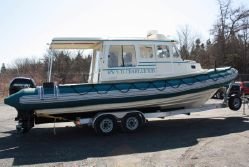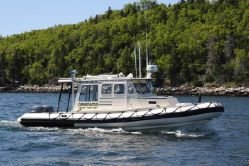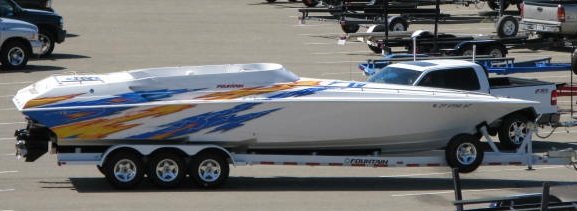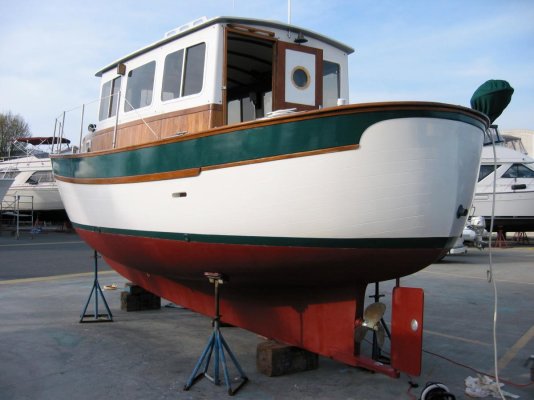I dont agree with the Wikipedia version of Hull Speed.
My comments are in Blue
WIKIPEDIA:
Hull speed, sometimes referred to as displacement speed, is the speed of a boat at which the bow and stern waves interfere constructively, creating relatively large waves, and thus a relatively large value of wave drag. As a boat moves through the water, it creates a bow wave. At real slow speeds there will be many little wavelets following it. As the speed increases, the bow wave gets bigger and longer. If you keep increasing the speed, there will be a point at which you create a wave the same exact length of the waterline of the boat. Picture a sine wave if you will. This wave form will actually start just ahead of the boat because the boat is pushing some water ahead of it as it also slices through it. This single wave form happens at what is considered 'hull speed' or 'theoretical hull speed'. If you make a sketch of this, which I am too lazy to do right now, you will notice that if you go any faster, the wavelength will get a little longer and the stern will slowly ride down into the trough and the bow will rise due to the shape of the wave form. This will cause you to push disproportionately more water to move forward, than the speed you are gaining, which translates to a much, much greater amount of HP and fuel required for a just a tad more speed. Though the term "hull speed" seems to suggest that it is some sort of "speed limit" for a boat, in fact drag for a displacement hull increases smoothly and at an increasing rate with speed as hull speed is approached and exceeded, with no noticeable inflection at hull speed. This preceding statement is total hogwash. I agree only with the part about it not being a speed limit. It is not a speed limit, but a point at which you are pumping way more HP and fuel for a little gain in speed. Mainly because the boat is now trying to climb it's own wave. Heavy boats with hulls designed for planing generally cannot exceed hull speed without planing. Wrong again. Take a typical 40' trawler with say a 36' waterline. The calculated Hull Speed would be 6 (the sq. root of 36) X 1.34 = 8 Kts for the Theoretical Hull Speed. How many of you with 40 footers get into a plane and maintain it under 8 Kts. This is for a semi-Displacement hull. With a true full displacement hull, you will never plane. Light, narrow boats with hulls not designed for planing can easily exceed hull speed without planing; indeed, the unfavorable amplification of wave height due to constructive interference diminishes as speed increases above hull speed. For example, world-class racing kayaks can exceed hull speed by more than 100%, even though they do not plane. Semi-displacement hulls are intermediate between these two extremes.
Hull speed is often called the "speed-length ratio", even though it's a ratio of speed to the square root of length. The concept of hull speed is not used in modern naval architecture, where considerations of speed-length ratio or Froude number are considered more helpful. Maybe for naval architects, but for average boaters with full displacement hulls such as sailors, the term theoretical hull speed is alive and well.
Oh well, I'm tired and busy at work so I'm sure some of my notes are flawed. Please feel free to shoot holes in it. I never take offense.
I am originally from NY and we are born obnoxious.










